Aeroponics and Hydroponics are the two main methods of growing plants without the use of soil. Aeroponics is a subcategory of hydroponics. These two methods of growing plants are however very different from each other.
It is common knowledge that plants mainly grow in soil. However, with the nutrients present in soil depreciating, gardeners and other farmers resort to other methods of growing healthy crops.
The common working principle between aeroponics and hydroponics is that they supply nutrients directly to the plants. This article focuses on a comparison: aeroponics vs hydroponics.
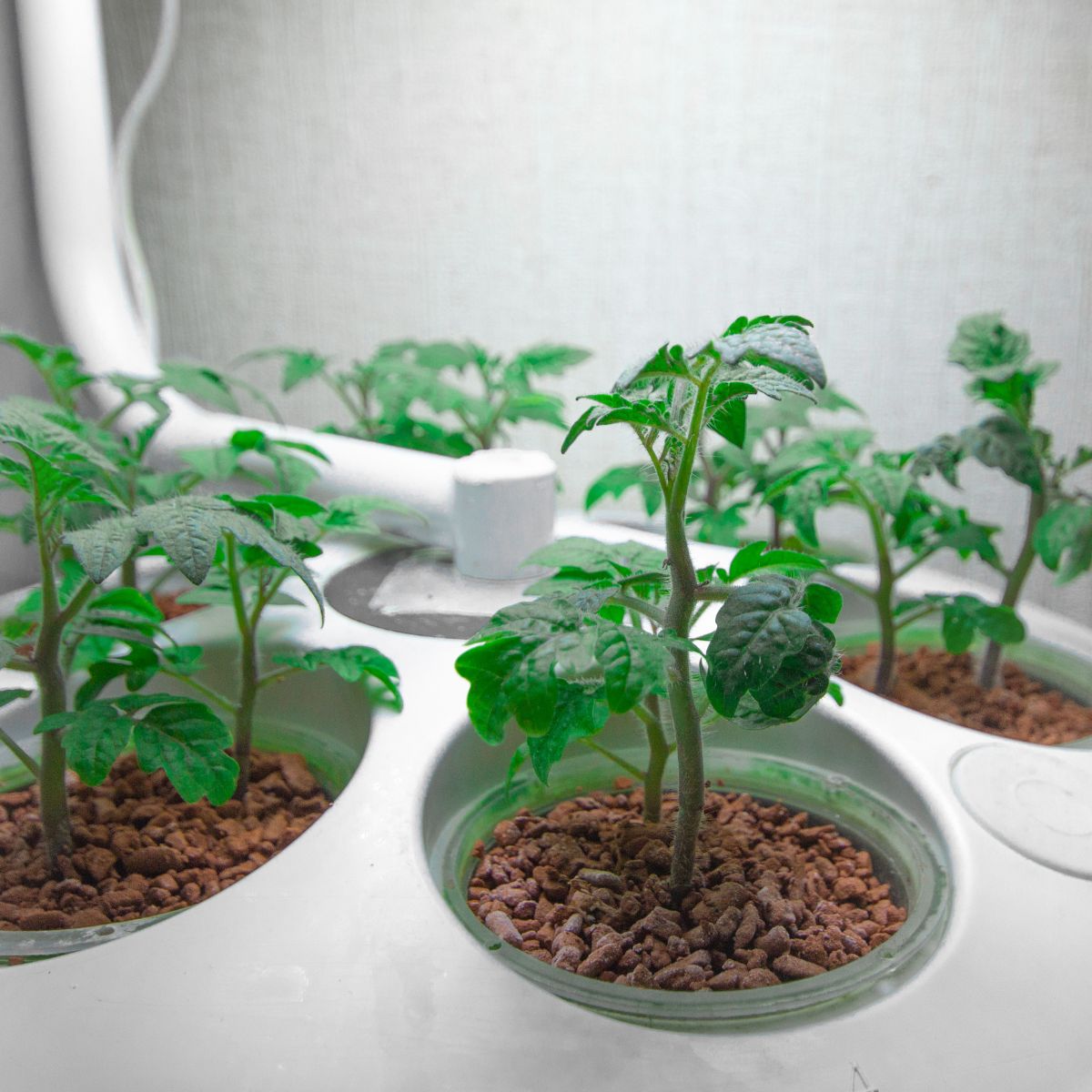
Read Next
- How Do Aeroponics Systems Work?
- Advantages of Aeroponics
- Increased exposure to the air
- Increased oxygen in the root zone
- Increased carbon dioxide supply
- Disease-Free Conditions
- Disadvantage of Aeroponics
- How do Hydroponics Systems Work?
- Advantages of Hydroponics
- Flexibility in growing plants
- Increased control in growing plants
- Reduced maintenance of plants
- Efficient in nutrient and water usage
- Increased plant yield
- Reduced effects of transplanting
- Disadvantages of Hydroponics
- Requires meticulousness when planting
- Increased costs of setting up
- Requires experience
- Limited variety of plants to grow
- Conclusion
- 💬 Feedback
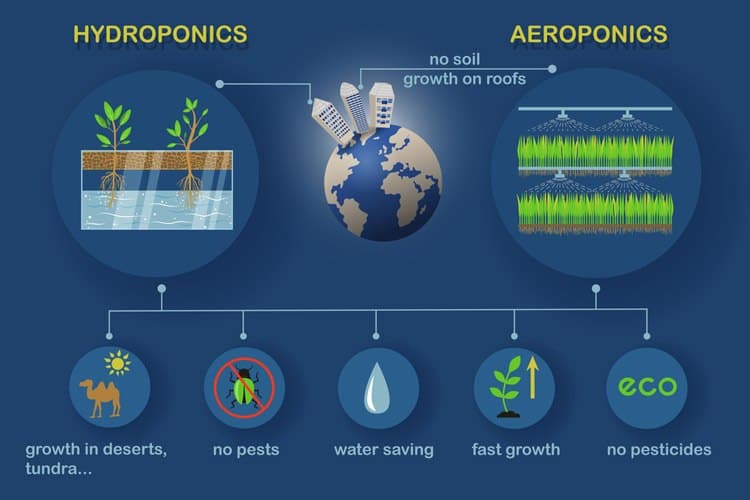
How Do Aeroponics Systems Work?
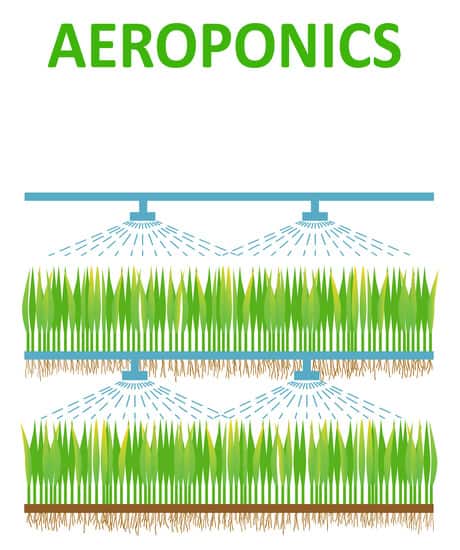
Aeroponics involves growing plants without any specific medium. Instead, plants grow in a natural environment that does not use soil or any other medium. Soil can be a hindrance to the growth of a plant, therefore; plants do not necessarily need soil for their growth.
Aeroponics is a form of hydroponics since it uses water to transmit nutrients. The two are quite different in how they operate as will be seen below. In aeroponics, plants grow under disease-free and pest-free conditions. These plants grow in a natural environment that promotes their productivity and increases overall yield.
The conditions in an aeroponic environment are similar to that of natural environmental conditions. The aeroponics system suspends plants in a dark enclosure, spraying the roots with a nutrient-dense solution at certain intervals.
It is because of these conditions that farmers grow healthy plants that flower and fruit regardless of their species. Aeroponics uses air in combination with water micro-droplets to grow and develop plants to maturity. The air has sufficient nutrients, water, and carbon dioxide.
Advantages of Aeroponics
Increased exposure to the air
Aeroponic systems provide plants with optimized air access for the plants to grow successfully. The systems also provide a support system for the plants that is pest-free and disease-free. The contact between the plant and the aeroponic system is minimal which allows for the full suspension of the plant in the air.
The root systems are free from restrictions that surround the root systems and stem. To prevent hindrance of natural growth, water access, and the expansion of the roots, there is minimal physical contact. Furthermore, minimal physical contact promotes air exchange and a disease-free condition.
Increased oxygen in the root zone
For plants to grow, it is necessary to have oxygen in their root zone. As mentioned before, the aeroponics environment contains micro-droplets of water combined with air. This stimulates the growth of plants in an environment with enough oxygen, water, and nutrient supply.
This increased nutrient supply and aeration are one of the factors that make growers favor aeroponics over hydroponics. The increased aeration of the nutrient solution promotes growth by delivering more oxygen to the roots.
It additionally prevents the development of pathogens. Aeroponics provides conditions that mimic the natural environment. The unrestricted supply of oxygen in the aeroponics condition stimulates natural growth for successful physiological development.
Increased carbon dioxide supply
There is full access to concentrations of carbon dioxide in an aeroponics system. Carbon dioxide is vital for plants to carry out photosynthesis.
The air system in an aeroponics system offers plants increased access to all the available carbon dioxide for photosynthesis. Using fluorescent grow lights to provide light to the plants to carry out photosynthesis.
Disease-Free Conditions
There is a minimal amount of physical contact in an aeroponics system between plants. Growing plants in a medium such as soil or any other medium increase the chance of disease spreading. This may infect other plants growing in that medium.
It is necessary that the grower sterilize the aeroponics system to prevent these infections. When a plant gets an infection in the aeroponics system it is easy to uproot it from the structure. It is possible to uproot such plants without infecting others.
Because of the disease-free environment, growers can grow plants in higher density in comparison to hydroponics systems. Aeroponics is a simple, valuable, and rapid method of growing healthy plants.
Disadvantage of Aeroponics
The main downside to aeroponics systems is that they require continuous attention. This is concerning nutrient density ratios and pH.
It is particularly complicated for starters to comprehend the system. It is advisable that only those with experience and familiarity use aeroponics systems.
How do Hydroponics Systems Work?
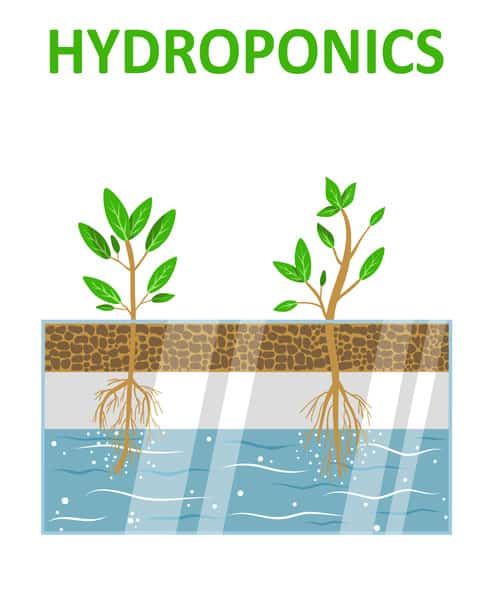
Hydroponics systems, unlike aeroponics, use a medium to grow plants. The growing medium may be coconut husks, clay pebbles, or perlites. These media replace soil as the medium for growing plants.
The material used should easily hold water and allow its movement. Plants grown in a hydroponics system obtain nutrients from the water soaking the growing medium.
Hydroponics uses a mineral nutrient solution in a water solvent to provide the plants with nutrients. The source of the nutrients varies in a hydroponics system and may include waste from fish, homemade hydroponic nutrients, or duck manure.
The solution rich in nutrients flows in the aerated plant medium to provide plants with the nutrients necessary for their growth.
Hydroponic systems are more efficient than other soil-based systems. There is more control to the grower. In addition, the grower has more flexibility in the types of plants you can grow.
However, hydroponic systems may be a source of concern for farmers with limited space. They require more space and are quite heavy. Hydroponic systems are also easy to set up.
Advantages of Hydroponics
Flexibility in growing plants
Hydroponics does not involve the use of soil as a growing medium. Growers and gardeners with limited space do not have to worry since there are hydroponic designs that favor limited space.
The issue of space is particularly beneficial for growers in an urban setting. Furthermore, you can grow your plants where light is available.
Increased control in growing plants
Growers using a hydroponic system have increased control over the delivery of nutrients and water to their plants. They can grow a wide variety of plants using different methods.
In comparison to soil-based growing methods, a grower can supply their plants with a wide range of nutrient solutions.
Reduced maintenance of plants
Soil-based systems require increased attention to maintain the health of plants. There is a need to spray pesticides, remove weeds, fumigate, or aerate the plants. Hydroponic systems, on the other hand, do not require this level of attention to maintain the plants in a healthy state.
Efficient in nutrient and water usage
It is possible to reuse the nutrient solution in the hydroponic system. The closed loop in the hydroponic system allows for the recycling of the water and nutrients in the nutrient solution. There is also a reduction in the carbon trace of the process.
Increased plant yield
The aim of any grower choosing to use a hydroponic system is to grow healthy plants and increase their yields. Hydroponic systems are capable of growing plants all year round. They can offer increased yields compared to other soil-based systems. This is due to their unrestricted supply of nutrients and water.
Reduced effects of transplanting
It is quite easy to transplant seedlings in a hydroponic system without damaging them. It is easy to grow these seedlings in a different medium and transfer them to other propagation media. Soil media may cause a “transplanting shock” when moving your plants to another growth medium. In comparison to soil-based media, hydroponics has reduced propagation time.
Disadvantages of Hydroponics
Requires meticulousness when planting
The level of attention required in a hydroponic system is more than that in soil-based systems. Unlike soil-based systems, hydroponics requires constant attention.
If left unattended, these plants may end up wilting and dying. The grower must supply water and nutrients to keep the plants alive.
Increased costs of setting up
To set up your hydroponics system, a grower may require more costs in comparison to operating it. The costs of setting up increase because of equipment, growing lights, and timers, among other necessary instruments.
Requires experience
To operate a hydroponic system, it is necessary to have the necessary technical knowledge and training. Beginners may find it quite difficult to set up and operate such a system due to its complexity.
Limited variety of plants to grow
You can grow a limited variety of plants in the hydroponic system. This is in comparison to aeroponics and soil-based growing systems. There are particular types of plants that may require soil to grow therefore unsuitable for hydroponics.
Conclusion
In comparing aeroponics vs hydroponics, it may be difficult to select the right one depending on your needs. Both have their benefits and disadvantages, however, aeroponics is more beneficial than hydroponics.
It is flexible and allows more control when growing your plants. You can additionally grow a wide variety of plants with aeroponics.
This is in comparison to hydroponics and soil-based methods with a limited variety of plants to grow. Either way, you go, there is a guarantee for increased yields and healthier plants.


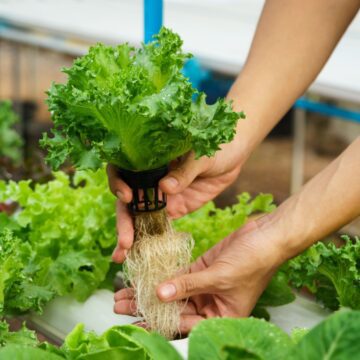


Comments
No Comments